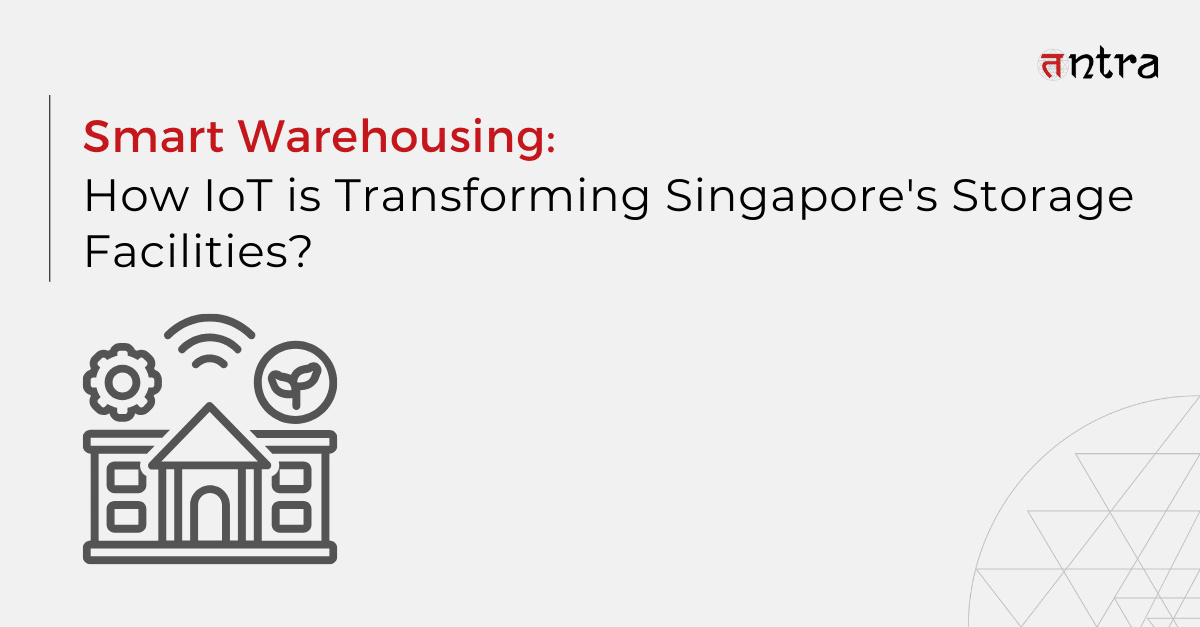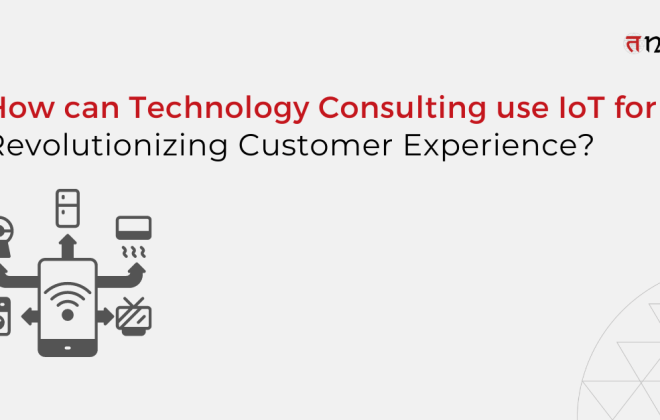
Smart Warehousing: How IoT is Transforming Singapore’s Storage Facilities?
Singapore’s warehousing landscape is undergoing a transformative shift with the integration of IoT technology. This revolution enhances safety, efficiency, and cost-effectiveness in supply chain operations. The adoption of IoT in logistics and supply chain management positions Singapore as a global leader in smart warehousing. The remarkable resilience of the warehouse market underscores the critical role of supply chain management. This advancement promises a sustainable and technologically advanced future, solidifying Singapore’s position at the forefront of logistics innovation.
Ensuring worker safety and well-being has always been a top priority for warehousing. Therefore, a device can actively monitor worker fatigue, prompt them to take breaks, and warn them about potential safety hazards, minimizing the risk of accidents with moving equipment. Real-time access to workforce activity, including precise locations within the facility, can help build a productive and safe environment.
This vision becomes a tangible reality with IoT implementations in warehousing, creating a secure and productive warehouse environment. For instance, DHL’s Advanced Regional Center in Singapore utilizes wearable wireless sensors to gauge worker fatigue levels, proactively advising rest breaks when necessary. Additionally, alerts are promptly dispatched when individuals are close to operational machinery.
Additionally, while considering smart warehouses solutions with IoT, DHL Supply Chain unveiled a state-of-the-art facility for global food packaging and processing leader Tetra Pak in Singapore. This cutting-edge warehouse seamlessly integrated Internet of Things (IoT) technology with data analytics, ensuring continuous monitoring and optimal conditions for perishable goods. Remarkably, goods are efficiently shelved within just thirty minutes of their arrival, and outgoing deliveries are prepared in a swift hour and a half.
The synergy of big data and IoT in this smart warehouse empowers Tetra Pak to address real-time issues. Warehouse supervisors leverage data to enhance traffic flow, refine resource allocation, and optimize work assignments. Additionally, the technology mitigates collision risks and keeps a vigilant eye on restricted access areas through timely management alerts. This amalgamation of IoT in smart warehouses revolutionizes the efficiency and safety of operations in the logistics industry.
Source: Air Cargo Next and DHL
IoT Revolutionizing Singapore’s Warehousing Landscape and Market Resilience
In Singapore, the need for warehouse facilities is still very strong. The occupancy rate for warehouses in the city-state was a phenomenal 90.8 percent as of the third quarter of 2022. Surprisingly, this represented the highest rate since the third quarter of 2018, demonstrating the market’s toughness even in the face of the COVID-19 pandemic’s hurdles. This pattern highlights how vital supply chain management is to maximizing warehouse usage.
According to Savills research, a constrained supply of warehouse space is anticipated post-2024, leading to an upward push on warehouse rents. The report also forecasts a year-on-year growth of 2% to 5% in rents for prime warehouse and logistics properties in 2023. To steer through this and other warehousing challenges, Singapore is adopting New Economy technologies such as IoT to utilize existing warehouses efficiently.
Despite obstacles, Singapore is adopting IoT solutions to improve warehousing and mobility. IoT enables the seamless integration of the digital and physical worlds thanks to a robust telecom infrastructure and broad 5G network. Singapore’s public and private sectors have adopted IoT, and the IoT Technical Committee has established standards for architecture, security, and data protection. This has boosted the adoption of IoT technology, which is expected to generate $5.47 billion in sales in 2022, cementing Singapore’s position as a leading global digital metropolis.
Revolutionizing Supply Chain Operations with IoT in Smart Warehouses
In the logistics sector, integrating IoT technology in warehouse management is an emerging trend. Businesses are employing smart technologies to streamline inventory processes and automation. However, not all Singapore warehouses can accommodate these cutting-edge technologies that businesses are adopting.
Given Singapore’s propensity for embracing new business concepts and technologies, it’s clear that innovative approaches in supply chain management will also find traction. With significant potential for AI, robotics, and IoT implementation in warehouses, businesses must enhance their facilities. Moreover, as Singapore serves as a pivotal business hub in the Asia Pacific region, new technologies are adopted organically. Consequently, the demand for smart warehousing in the logistics industry is on the ascent in the country.
Here are some ways IoT in warehouses is improving self-storage facility operations in Singapore:
- 3PL Decision Making
The Internet of Things (IoT) is revolutionizing 3PL decision-making by enabling the connection of everyday objects to the Internet, driving data-driven logistics. Connected warehouses enhance asset transparency and localization by tagging items, pallets, and operational hardware. These smart objects provide real-time orders, content, and location information, enabling automated inventory management.
With the decreasing cost of sensor and analytics technology, logistics services in Singapore now have unprecedented visibility into operations, impacting decisions on storage, monitoring, routing, servicing, and delivery. Integrating IoT devices with supply chain management software is helping an island nation like Singapore optimize operational efficiency by allowing real-time monitoring of various aspects such as temperature, security, and equipment status.
- Enhances Security
Warehouse security in Singapore is changing as a result of the IoT in logistics and supply chain, as shown by the DHL Advanced Regional Center. The business successfully uses data to utilize wearable wireless sensors powered by IoT to prevent accidents, setting a new bar for safety. Using this technology, warehouse facility managers may remotely monitor their facilities and quickly respond to security issues.
Warehouses are strengthening security protocols and establishing a secure environment for preserving priceless assets and crucial operations by smoothly integrating IoT technologies. This ground-breaking method highlights how the Internet of Things (IoT) revolutionizes the logistics and supply chain industry by improving warehouse security and safety measures.
- Better Inventory Management and Visibility
Embracing advanced inventory management systems is paramount for Singaporean businesses. Transitioning from manual to integrated digital processes yields significant benefits, including a 25% boost in productivity, 10-20% improved space utilization, and a 15-30% increase in stock efficiency. Essential components for such a system include RFID tags for streamlined tracking and IoT sensors for real-time data capture and precise item location.
Moreover, integrating AR technology, robotics, and autonomous equipment further elevates supply chain management. Employing comprehensive supply chain management software and a robust IoT platform is imperative for seamless implementation.
- Cost Reduction
The deployment of IoT in Singapore is resulting in significant cost savings in warehouse management. Self-storage facilities are successfully reducing operational costs through proactive monitoring of energy use and strategic resource allocation. These digital solutions, provided by smart city IoT solutions, make it possible to precisely control consumption patterns, ensuring that resources are used as efficiently as possible.
This not only promotes efficiency but also makes a major contribution to the overall cost-effectiveness of Singaporean warehouse operations. Adopting IoT technology from reputable IoT solutions companies is proving to be a crucial step toward implementing warehouse management strategies that are both environmentally friendly and profitable.
Discover how our ERP system revolutionized spare parts manufacturing. Read the case study now!
Conclusion
Singapore stands at the forefront of a revolution in warehousing and logistics, driven by the transformative power of IoT technology and innovative IoT solutions development. The remarkable resilience of the warehouse market, even amidst the challenges of the COVID-19 pandemic, underscores the critical role of supply chain management. The adoption of IoT is reshaping warehouse operations, enhancing security, optimizing inventory management, and ultimately reducing costs through advanced IoT solutions for warehouses. This smart warehousing revolution ensures efficiency and positions Singapore as a global leader in logistics and supply chain innovation, firmly establishing it at the forefront of smart warehousing in the logistics industry. Integrating IoT in warehouse management is pivotal to a sustainable and technologically advanced future.
For integrating IoT in your supply chain solutions, contact Tntra, a leading software product engineering company in Singapore.




